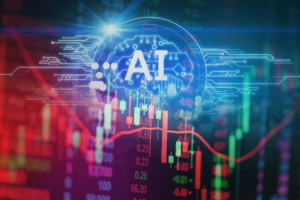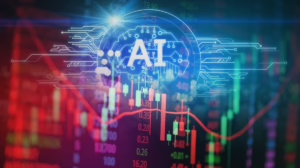Democratizing AI: Tools and Platforms Making Machine Learning Accessible to All
Introduction
Artificial Intelligence (AI) and machine learning (ML) have become integral components of various industries, driving innovations from healthcare to finance, from entertainment to education. However, the complexities and nuances of these technologies often create barriers to entry for those without extensive technical expertise. Democratizing AI means breaking down these barriers and making ML accessible to all, enabling individuals and organizations to leverage these powerful technologies regardless of their background. This article explores the tools and platforms that are facilitating this movement, their impact on various sectors, and the future of democratized AI.
Understanding the Need for Democratization in AI
The potential applications of AI are vast, from automating mundane tasks to making predictions in real-time data environments. However, the high costs of development, steep learning curves, and limited access to cutting-edge resources can hinder wider adoption. This is particularly true for small businesses, educational institutions, and individuals who may not have the financial backing or expertise to implement AI solutions.
Barriers to Access
-
Technical Expertise: Traditional AI development often requires knowledge of programming languages, vocabulary specific to data science, and familiarity with algorithms and models.
-
Financial Constraints: AI tools can be expensive, from pricing for advanced software to costs associated with cloud computing resources. This poses a significant challenge for smaller entities.
-
Data Availability: Effective machine learning models rely on vast amounts of high-quality data. Many smaller organizations may struggle to collect, clean, and maintain datasets.
-
Learning Resources: While there is a wealth of information available online, the sheer volume can be overwhelming for those just getting started. Identifying relevant courses, tutorials, or guides can be time-consuming.
The Imperative for Democratization
By opening up AI to a broader audience, we can enhance innovation across sectors, drive economic growth, and ensure that diverse perspectives contribute to the development of AI technologies. Democratization can also lead to more ethical AI practices, as a diverse group of people can actively participate in discussions regarding AI ethics, bias, and accountability.
Tools and Platforms Facilitating Democratization
The following sections outline key tools and platforms that have emerged to lower the barriers to AI and machine learning, enabling individuals and organizations to harness these technologies for their needs.
1. No-Code and Low-Code Platforms
No-code and low-code platforms have revolutionized the software development landscape. These platforms allow users to build applications, including AI features, with little or no coding knowledge.
Key Examples:
-
Google AutoML: Part of Google Cloud, this product allows users to train high-quality machine learning models specific to their needs while requiring minimal machine learning knowledge.
-
Microsoft Azure Machine Learning: This platform offers drag-and-drop features to build, train, and deploy machine learning models, making it accessible to non-developers.
-
Amazon SageMaker: Amazon’s platform supports both experienced data scientists and novices, providing built-in algorithms and extensive documentation to ease the learning curve.
2. Open-Source Libraries
Open-source libraries provide a treasure trove of resources for those willing to delve into AI development. They are usually free to use and come with extensive community support.
Notable Libraries:
-
TensorFlow: Developed by Google, TensorFlow offers a comprehensive ecosystem of tools, libraries, and community resources that aid users in the development and training of machine learning models.
-
PyTorch: This dynamic framework has gained popularity for its simplicity and ease of use, particularly in research settings. Its strong community support allows newcomers to quickly find resources.
-
Scikit-learn: Perfect for beginners, this Python library makes it easy to implement basic machine learning algorithms and provides built-in datasets for experimentation.
3. Educational Platforms
Online educational resources have dramatically transformed how individuals learn about AI and ML. These platforms have made it easier for anyone to access high-quality educational content.
Recommendations:
-
Coursera: Partnering with leading universities and organizations, Coursera offers a variety of courses—from beginner to advanced levels—covering numerous aspects of AI.
-
edX: Similar to Coursera, edX provides free courses from top-tier universities, enabling learners to gain a solid understanding of machine learning concepts.
-
Kaggle: Kaggle is not only a platform for data science competitions but also a community-driven resource for tutorials and datasets that can be used to practice machine learning skills.
4. Cloud Services
Cloud-based services have simplified the deployment and operation of machine learning models, reducing the need for on-premises hardware and resources.
Prominent Services:
-
Google Cloud AI: Offers a wide array of AI and machine learning services, including pre-trained models and tools for building custom models.
-
Microsoft Azure AI: Provides robust AI services, including APIs for image recognition, text analytics, and conversation intelligence.
-
IBM Watson: Known for its natural language processing capabilities, Watson offers various cloud-based AI services aimed at enhancing business intelligence.
5. Community and Support Platforms
Engaging with community platforms can be pivotal for learning and sharing knowledge about AI. These platforms not only provide access to resources but also create networking opportunities.
Examples:
-
GitHub: As the largest platform for collaboration on software projects, GitHub hosts numerous repositories related to AI and ML, allowing users to learn from existing projects.
-
Stack Overflow: This Q&A website for programmers is invaluable for troubleshooting, as many AI and ML enthusiasts participate and provide solutions to common issues.
-
Medium and Towards Data Science: These platforms host numerous articles and tutorials written by experts and enthusiasts alike, offering insights into current trends and practices in AI.
Impact of Democratizing AI
Innovation Across Sectors
As AI tools and resources become accessible to a broader audience, innovation flourishes. Small businesses can automate customer support, enhance marketing strategies, and analyze data to make informed decisions. Educational institutions can utilize AI for personalized learning experiences, ensuring that students receive the attention they need based on their performance.
Workforce Development
Democratizing AI can also contribute to workforce development. As companies and individuals gain access to AI technologies, there will be a demand for new skills. This creates opportunities for upskilling existing employees and preparing the next generation for future careers in AI and ML.
Ethical Considerations
A diverse group of individuals working in AI can help address key ethical issues related to AI deployment, including bias and fairness. By involving multiple perspectives, organizations can ensure that their AI systems serve all segments of the population equitably.
Challenges on the Path to Democratization
While the democratization of AI presents numerous opportunities, significant challenges remain.
1. Quality of Resources
Given the vast number of courses, tools, and frameworks available, the quality and reliability of resources can vary significantly. Users must be discerning in selecting the tools and educational materials they use.
2. Rapid Technological Advancements
The fast-paced development of AI technologies can be a double-edged sword. While it drives innovation, it can also make existing knowledge and skills obsolete relatively quickly. Continuous learning becomes paramount.
3. Data Privacy and Security
As more individuals and organizations engage with AI, concerns about data privacy and security increase. It’s crucial to establish guidelines and frameworks that protect users while still enabling data-driven insights.
The Future of Democratized AI
Trends to Watch
-
Increased AI Literacy Programs: Educational institutions and organizations will likely expand offerings to teach AI skills, ensuring that future generations are equipped to navigate and leverage AI technologies.
-
Focus on Ethical AI: There will be a growing emphasis on ethical considerations as AI becomes ingrained in everyday life, leading to more frameworks designed to ensure fairness and accountability.
-
Integration with Other Technologies: AI will continue to integrate with other advancing technologies, such as blockchain, the Internet of Things (IoT), and augmented reality (AR), further enhancing its applications.
Conclusion
Democratizing AI represents a crucial step toward a more inclusive, innovative, and ethical deployment of technology. By lowering barriers and providing the necessary tools and resources, we can enable individuals and organizations to leverage AI capabilities. The transformation of techniques, tools, and knowledge dissemination ensures that the potential of AI is harnessed for the greater good. As we look to the future, it is vital to continue fostering an environment that encourages innovation, ethics, and community engagement in artificial intelligence.
This article outlines the crucial aspects of democratizing AI, emphasizing the tools, platforms, and implications for society. The democratization of AI not only opens doors for innovation and creativity but also ensures that diverse voices contribute to shaping the future of technology. Through collaborative efforts, we can move toward a world where AI serves everyone, breaking down economic, social, and technical barriers.


























Add Comment